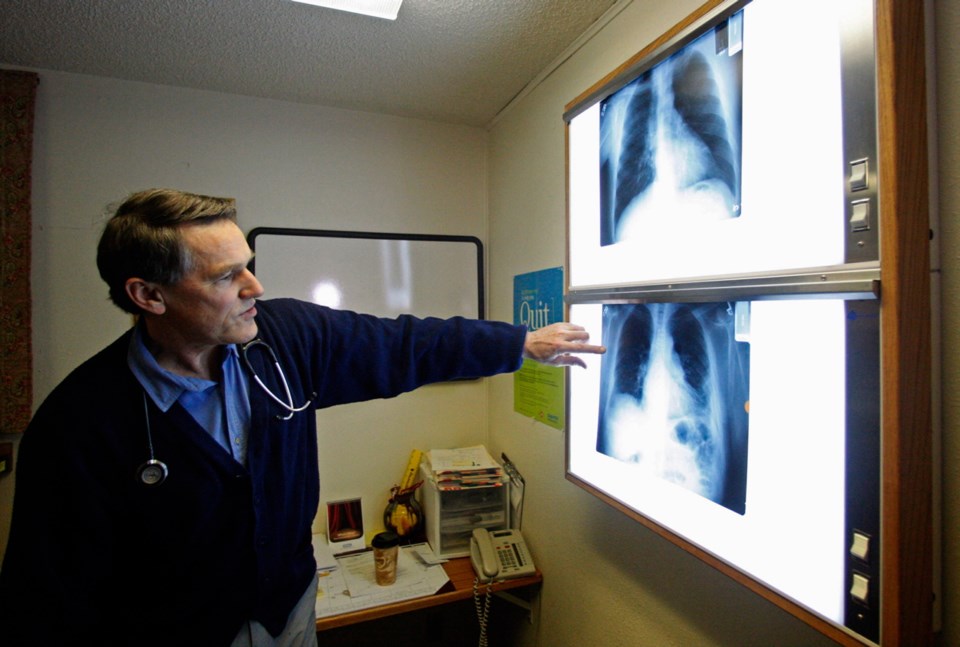Last month, a federal ban on the import, manufacture, sale, use and export of asbestos and asbestos-containing products came into effect. The regulations are meant to protect Canadians from asbestos exposure, known to cause lung disease and cancer.
The ban might have surprised some people. Didn’t Canada ban the manufacture of asbestos-containing materials in the 1970s? Wouldn’t that have curtailed people’s exposure to the mineral’s fine, airborne fibres and stopped the lung diseases and cancers that asbestos causes?
Well, sort of. Production and import of many asbestos-containing materials was banned in 1979, but many materials — those that wouldn’t crumble or break under hand pressure — were exempt. Some asbestos-containing materials continued to be made for use in construction and the automotive industry.
For example, if you live in a house built in the 1990s or earlier, its drywall likely contains asbestos. As well, Canada imported many asbestos products in the form of brake pads, brake linings and similar friction products, even in recent years.
The exemptions’ rationale was that when asbestos fibres are enclosed or bound, in good condition, and left undisturbed, the materials are safe. It’s only as materials age or are disturbed that the asbestos breaks down into small fibres that, when released into the air by touch or movement, float for hours. When inhaled, they can become trapped in the lungs’ lining where they can sit for decades, irritating and scarring tissues, before causing illness.
In addition, Canada continued to export asbestos until the country’s last asbestos mines closed a few years ago. Canada exported raw, unmixed, unfixed asbestos primarily to developing countries that lacked environmental and worker protections, where it was then mixed with other ingredients to form cement and other building materials.
Doctors and medical researchers have known since the 1960s that inhaling asbestos fibre causes deadly cancers and lung disease. The World Health Organization declared asbestos a human carcinogen in 1987. And over the past three decades, incidence of asbestos-specific disease in Canada has increased.
Between 2006 and 2017, B.C. reported 1,101 deaths due to asbestos exposure at work. These numbers are based only on successful claims paid out by WorkSafe B.C. They don’t include unsuccessful claims or claims not reported. A 2010 UBC study of health records and workers’-compensation data from 1992 to 2004 found, for example, that only 23 per cent of victims of asbestosis filed provincial workers’-compensation claims.
The WorkSafe B.C. numbers also don’t include British Columbia residents who died because of asbestos-caused illness acquired through activities not related to their work. Do-it-yourself home renovators who once pulled out drywall, tore down plaster, cut old roofing tiles and jackhammered cement flooring in homes and condos built between 1920 and 2000 fall into this category.
Of the 70 asbestos-related deaths reported by WorkSafe B.C. for 2017, more than 60 per cent were due to mesothelioma, a rare cancer caused only by inhaling asbestos fibres. Thirteen per cent were caused by asbestosis. Inhaling asbestos also worsens lung cancers caused by tobacco smoke and poor air quality.
Toronto-based Institute for Work and Health estimates about 2,300 new patients are diagnosed with asbestos-exposure cancers in Canada annually. The agency calculated the total health-care, productivity and social costs of each new case of mesothelioma and lung cancer from asbestos-related workplace exposure to be more than $815,000.
Because decades might pass before a person exposed to asbestos develops mesothelioma, asbestosis or the other related diseases, health professionals believe the number and costs of asbestos-related cancers and disease will continue to rise.
Now that there is a more complete ban in place in Canada, you might think that we’re safe. But even this new ban isn’t complete. It doesn’t, for example, apply to asbestos-mine tailings, which can continue to be reworked to extract other minerals. It also doesn’t apply to asbestos-containing products already in use or installed in existing buildings, equipment, and vehicles. Those continue to be managed by existing federal, provincial, and municipal rules and regulations.
So, although the new regulations better protect us from asbestos exposure, we still have to beware the latent danger tied up in the materials that make up our homes, offices and vehicles.



